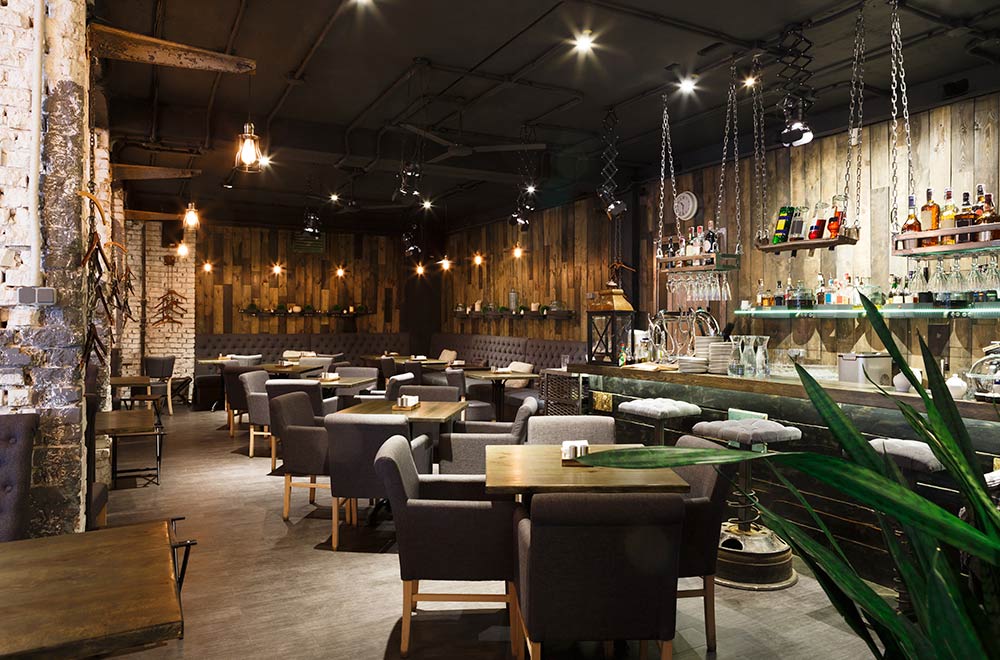Instagrammable Restaurants Islamabad: Picture-Perfect Dining Knowledge
Instagrammable Restaurants Islamabad: Picture-Perfect Dining Knowledge
Blog Article
Savor Genuine Eastern Cuisine With a Pan-Asian Spin for a Culinary Experience
Embarking on a culinary journey with genuine Eastern food, improved with a Pan-Asian spin, offers a special chance to explore the rich tapestry of tastes that define the area's varied culinary practices. As you contemplate these attracting meals, consider the cultural narratives and historical influences that form them, each bite supplying a story waiting to be discovered. asian fusion restaurant.

Checking Out Pan-Asian Tastes
In the realm of global gastronomy, Pan-Asian cuisine stands apart for its amazing diversity and the harmonious interplay of tastes from numerous Eastern societies. This culinary strategy celebrates the rich practices and distinct ingredients discovered throughout the continent, developing a tapestry of tastes that is both fascinating and rewarding. Secret to Pan-Asian food is its capability to stabilize different flavors-- sweet, salted, spicy, and sour-- while highlighting the freshness and top quality of each component.
From the umami-rich soy sauce of Japan to the fiery chili peppers of Thailand, Pan-Asian food offers a comprehensive palette of flavors. These elements are usually combined in creative means, boosting dishes with layers of complexity. For example, the use of fragrant herbs such as lemongrass and cilantro, common in Vietnamese and Thai cuisine, adds a refreshing illumination to recipes, while the unification of coconut milk delivers a creamy, abundant appearance.
The emphasis on fresh produce and aromatic seasonings ensures that each dish is not only a feast for the preference buds but likewise for the senses. Pan-Asian cuisine invites restaurants to embark on a cooking journey, exploring the huge and varied landscapes of Oriental gastronomy with every bite.
Blend Recipes to Attempt
While Pan-Asian food is celebrated for its typical tastes, the modern cooking landscape is progressively accepting blend dishes that mix these traditional aspects with influences from various other areas. This cutting-edge technique not only honors the abundant heritage of Oriental cookeries yet likewise introduces unique preference experiences that appeal to contemporary tastes buds.
A prime example of such a blend meal is the Korean-Mexican taco, where marinated bulgogi beef is covered in a warm tortilla, covered with kimchi and a hot gochujang-infused salsa. This combination marries the bold, mouthwatering flavors of Korea with the vivid, fresh aspects of Mexican food. In a similar way, sushi burritos have obtained appeal, integrating the delicate virtuosity of Japanese sushi with the passionate, hand-held ease of a burrito, commonly including blend active ingredients like tempura shrimp and avocado with a drizzle of wasabi mayo.
One more notable meal is Thai curry ramen, which infuses the velvety, aromatic seasonings of Thai curry right into the soothing brew of typical Japanese ramen, creating an unified blend that entices the senses. These blend meals expand past mere novelty; they stand for a cooking dialogue in between societies, urging exploration and innovation worldwide of Pan-Asian food.
Important Active Ingredients and Seasonings
To absolutely value Pan-Asian cuisine, one should understand the vital ingredients and flavors that form its structure. This varied culinary design draws from a rich tapestry of Asian customs, utilizing a harmonious mix of tastes and appearances. Key ingredients include soy sauce, fish sauce, and oyster sauce, which impart a tasty umami depth important to Oriental meals. Complementary to these are rice vinegar and mirin, offering a fragile acidity and sweetness.
Aromatic aspects are critical, with ginger, lemongrass, and garlic being ubiquitous across numerous Pan-Asian recipes. These active ingredients give a great smelling base that boosts the intricacy of tastes. Spices such as celebrity anise, cardamom, and cinnamon introduce heat and personality, resembling impacts from areas like China and India.

Food Preparation Methods and Tips
Grasping the art of Pan-Asian food needs knowledge with its unique food preparation strategies, each adding to the vivid tapestry of flavors this cooking custom is celebrated for. Central to these techniques is the stir-fry, a rapid food preparation strategy that preserves the nutritional stability and brilliant colors of active ingredients. Utilizing a frying pan, the stir-fry approach enables for also heat circulation, essential look these up for attaining the particular appearance and flavor equilibrium of Pan-Asian recipes.
An additional fundamental technique is steaming, specifically common in Chinese food. This mild technique keeps the natural tastes and nutrients of components, making it ideal for fish and shellfish and vegetables. Dumplings, a precious staple, usually benefit from steaming, leading to soft, delicious structures.
Barbecuing, additionally indispensable, imparts great smoky midsts to meals such as Korean bulgogi or Japanese yakitori (asian fusion restaurant). This technique often entails marinading ingredients, allowing flavors to penetrate deeply prior to food preparation over an open flame or hot plate
Finally, mastering the art of balancing tastes-- sweet, sour, salty, bitter, and umami-- is critical. Effectively layering these aspects can raise a recipe from ordinary to remarkable, providing a complex and satisfying cooking experience that embodies the significance of Pan-Asian food.
Dining Experiences Worldwide
Throughout the globe, Pan-Asian food offers an exceptional eating experience, commemorated for its abundant tapestry of tastes and lively discussions. This culinary sensation has actually gone beyond social borders, catching the hearts and palates of food lovers worldwide. In multicultural cities like New York, London, and Sydney, Pan-Asian dining establishments work as melting pots where cooking practices from Thailand, Japan, China, and beyond converge, supplying diners with an eclectic mix of recipes that highlight the area's variety.
The global charm of Pan-Asian cuisine hinges on its ability to supply both authenticity and technology. Chefs skillfully wed typical active ingredients such as lemongrass, soy sauce, and miso with contemporary techniques, causing dishes that are both acquainted and refreshingly brand-new. This blend allows diners to start a cooking journey that appreciates heritage while embracing modernity.
Moreover, eating experiences are elevated with thoughtfully developed settings that show the values of Pan-Asian looks. From minimalist Japanese-inspired interiors to vivid Thai-themed rooms, each dining establishment supplies a special atmosphere that complements the cooking offerings. Therefore, patrons are not merely consuming a meal however partaking in a social experience, making Pan-Asian dining a really global phenomenon.
Conclusion
The exploration of Pan-Asian cuisine provides a profound understanding of the complex interplay of flavors and cooking customs across Asia. By accepting blend meals such as Thai curry ramen and sushi burritos, the cooking trip not only highlights the adaptability of standard components yet additionally showcases cutting-edge modern strategies. This gastronomic experience, improved by necessary spices and cooking methods, provides an one-of-a-kind possibility to value the cultural variety and cooking artistry that define Pan-Asian cuisine on a global have a peek at these guys range.
Beginning on a culinary journey with authentic Oriental food, boosted with a Pan-Asian spin, provides a special chance to check out the rich tapestry of tastes that specify the link area's diverse cooking practices.In the world of global gastronomy, Pan-Asian cuisine stands out for its impressive variety and the harmonious interplay of tastes from numerous Eastern cultures. Key to Pan-Asian food is its capability to stabilize contrasting tastes-- wonderful, salty, spicy, and sour-- while highlighting the freshness and quality of each ingredient.

Report this page